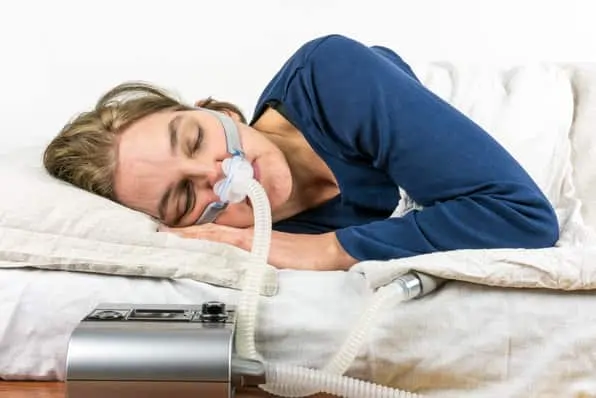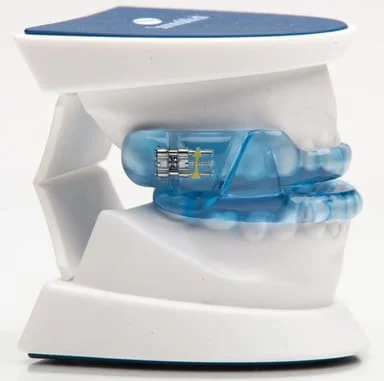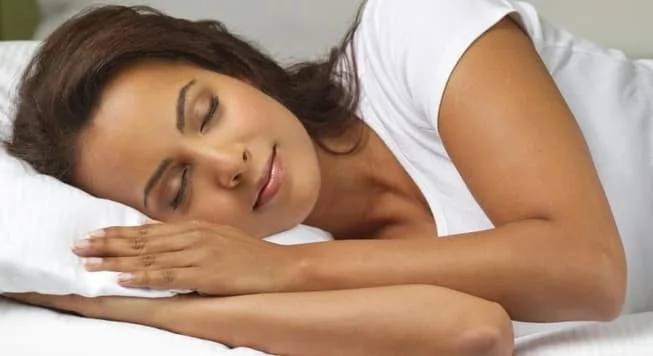Obstructive Sleep Apnea (OSA):
What is Obstructive Sleep Apnea?
Dr. Chomiak has special training in the field of sleep apnea and sleep medicine. He works closely with a team of pulmonologists and physicians to provide oral appliance therapy for patients that snore or are intolerant to the use of a CPAP machine.
Sleep Apnea has become one of the deadliest silent epidemics. People who suffer from sleep apnea are at a high risk for high blood pressure, heart attacks and strokes since their oxygen levels can fall to dangerous levels when they sleep. Most people are not aware they have sleep apnea. Signs of sleep apnea include:
- Daytime sleepiness, always tired, no energy
- Fall asleep anytime, anywhere
- Difficulty concentrating
- Memory loss
- Snoring
- Stop breathing at night
- High Blood Pressure
- Irritability
- Anxiety or depression
- Cardiovascular problems
- Reduced sex drive
- Weight gain
- Wake up feeling tired or with headaches
Children’s symptoms include:
- Misdiagnosis of ADHD
- Bedwetting
- Irritability
- Difficulty concentrating in school
- Breathing problems / snoring
Obstructive Sleep Apnea occurs when the posterior pharyngeal airway collapses during breathing while sleeping and the patient is unable to breathe or pass air. If this cessation of breathing lasts more than 10 seconds, it is called an apnea. Sleep studies evaluate the number of apneas per hour and determine a level of severity. Each time the patient experiences an apnea event, oxygen levels in the body drop to dangerous levels in the brain, heart and other organs. As the oxygen levels drop, the body releases adrenalin to wake the individual to breathe again. The patient will usually gasp, wake up instantaneously and begin breathing again. This cycle causes a tremendous interruption in sleep patterns leading to daytime drowsiness. The constant release of adrenaline lends to a condition of high blood pressure. This adrenaline release in children can cause bed wetting. The chronic reduction in oxygen levels can cause headaches, daytime fatigue, irritability and more importantly, heart attacks and strokes. In children this lack of oxygen can mimic ADHD, cause irritability, and loss of concentration in school.
How Is Obstructive Sleep Apnea Treated?

Signs of OSA can be recognized by many health care professionals as your dentist or family physician. Patients suspected of OSA are referred to a Sleep Specialist (Pulmonologist) who will perform a sleep study and make a definitive diagnosis. Once diagnosed, most patients are given a CPAP (Continuous Positive Airway Pressure) device. This is an air pump which sits on a table and has a hose which fits over the nose and blows a continuous airflow under calibrated pressure to open the air passages. A BiPAP is a similar device which has two different pressures, one for inhalation and one for exhalation which is more comfortable for some patients. CPCPs are very effective for treating OSA when the patients can tolerate them. However, some patients have a hard time using the device and have complained of the following problems:
- Headaches from the strap
- Claustrophobia
- Pump noise
- Voice changes
- Skin Irritations
- Inflammation and sinusitis
- Dryness of the throat

Oral appliances are an alternative to patients who can not tolerate a CPAP. Oral appliance therapy improves the airway patency by moving the jaw forward and/or down to open the airway passively without forced pressures. Sleep appliances are an effective alternative for OSA, are easily adaptable and comfortable for most patients. They are non-invasive and convenient compared to alternative treatments. They are the first line of treatment for snoring.

What Can Cause Obstructive Sleep Apnea?
More severe cases of airway blockage due to large tonsils, long soft palates or uvulas, excessive fleshy or fatty tissues along the airway, large tongues, excessive relaxation of the tongue or pharyngeal muscles can cause obstructive sleep apnea. Patients at higher risk for OSA are women who have a 15-inch neck or greater and men who have a 17-inch neck or greater. People who are over 40 years of age, are overweight, smokers, large muscular athletes, or have a family history of chronic respiratory disorders or sleep apnea have a higher propensity for developing OSA. People failing to treat their sleep disordered breathing have a much higher risk of falling asleep while driving or at work. They also have a much greater risk for cardiovascular problems as heart attacks and strokes and a higher incidence of depression. If you suspect you have OSA, consult your family physician or dental sleep specialist.
Snoring
Sleep disordered breathing encompasses several sleep disorders associated with varying degrees of airway blockage due to large tonsils, long soft palate or uvula, excessive fleshy or fatty tissues along the airway, excessive relaxation of the tongue, colds, allergies or deviated septums. In our dental sleep practice, we observe many of these conditions which lead to snoring and then to sleep apnea. Snoring is a result of the vibration of these excessive tissues during breathing as air passes through the airway. Snoring is not harmful except to annoyed sleeping partners. It is not a serious medical disorder and can be easily treated with an oral appliance.
EPWORTH SLEEPINESS TEST (Screening for Obstructive Sleep Apnea)
This simple test can give you a pretty good idea of how likely you are of having obstructive sleep apnea. Take the test yourself and see.
How likely are you to fall asleep or doze off in the following situations? Use the following scale to choose the most appropriate number for each situation.
- 0-Would never dose
- 1- Slight chance of dosing
- 2- Moderate chance of dosing
- 3- High chance of dosing
Situation:
- Sitting and Reading. ____________
- Watching Television. ____________
- Sitting inactive
in public place as a meeting, theater etc. ____________ - As a passenger in a car
for an hour without a break. ____________ - lying down in the afternoon
when circumstances permit. ____________ - Sitting and talking
to someone. ____________ - Sitting quietly after
lunch without alcohol. ____________ - In a car while stopped
for a few minutes in traffic. ____________
This test is used by physicians/dentists to screen for your lack of sleep. If your score is:
- 1-6………………......You are unlikely to have sleep apnea
- 7-8………………......Your score is average
- 9 or higher………Obstructive sleep apnea is very likely, and you should seek the advice of a physician or qualified sleep dentist.

